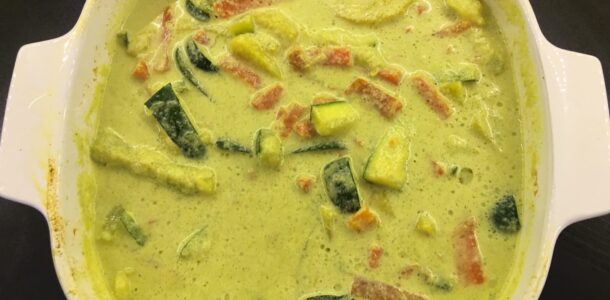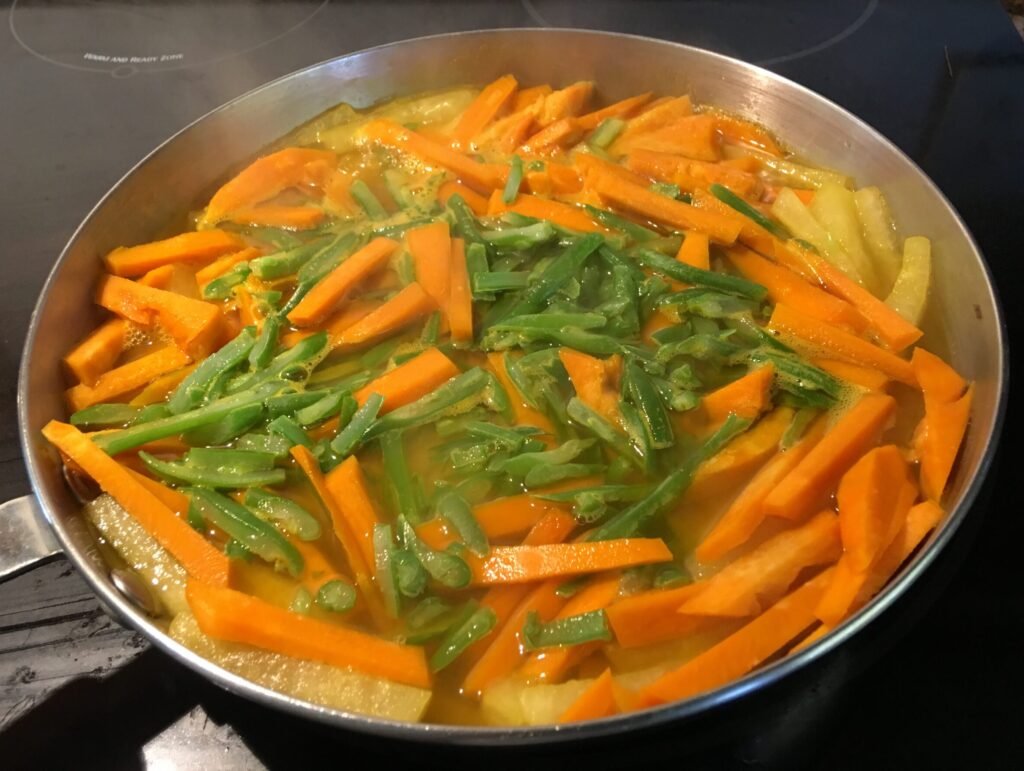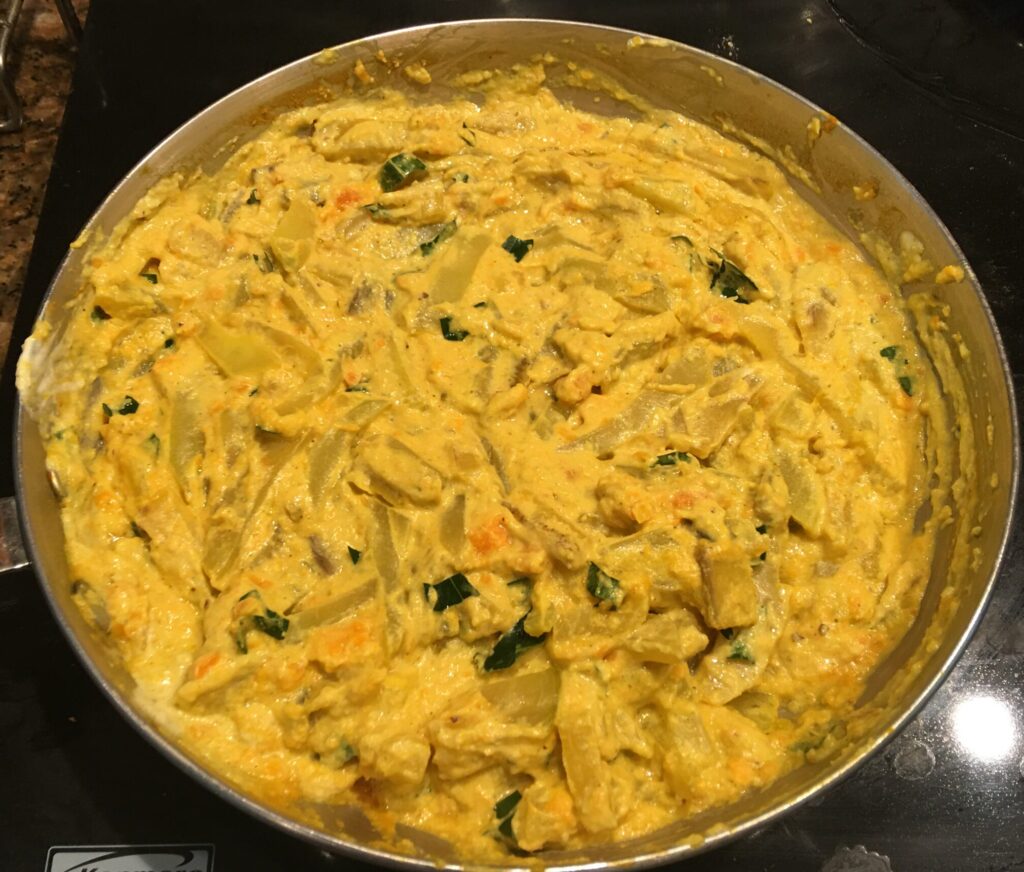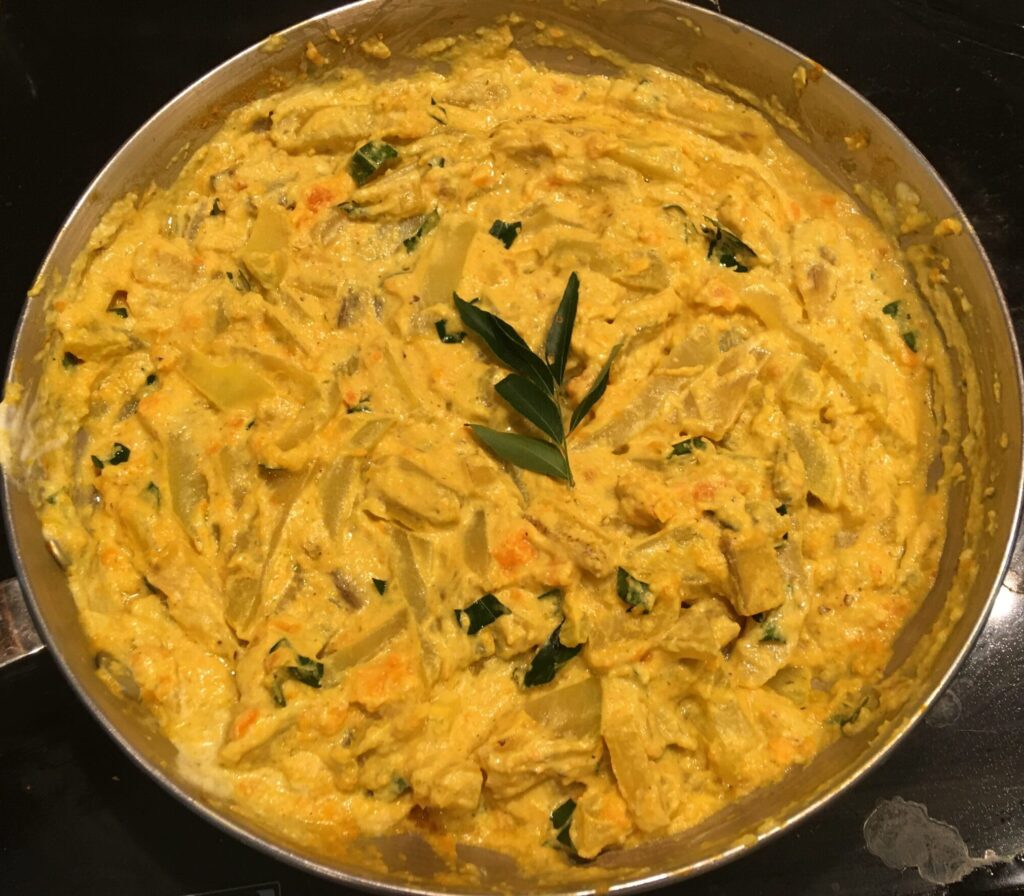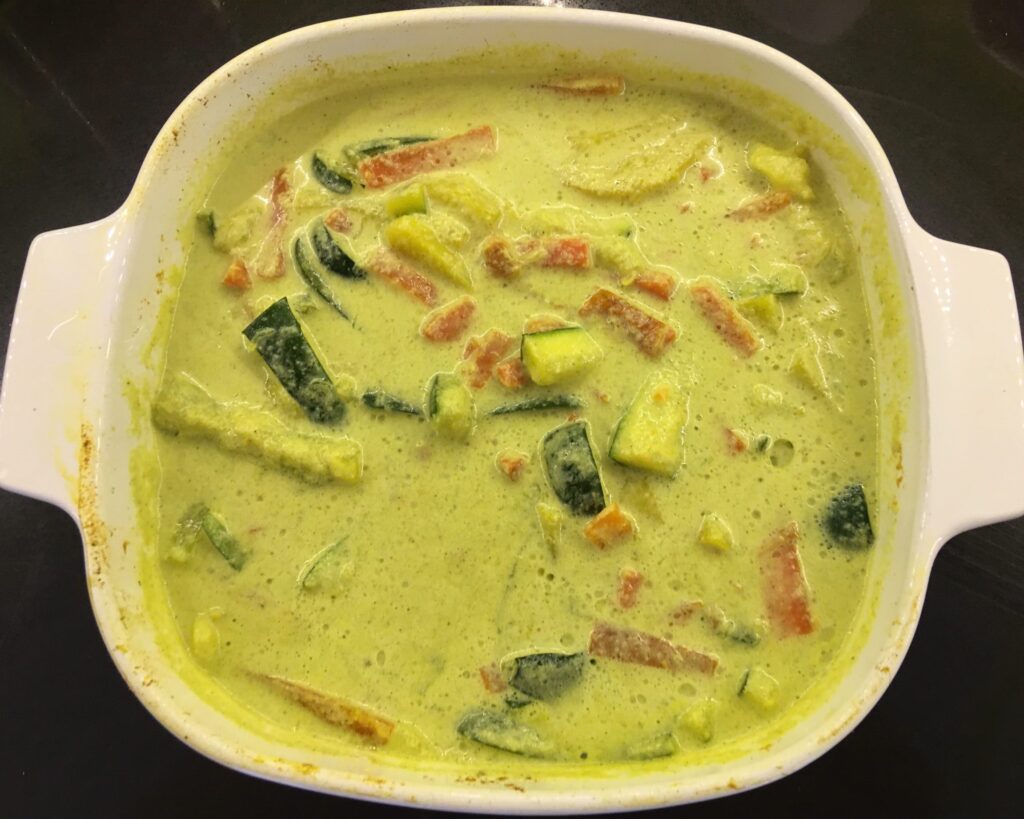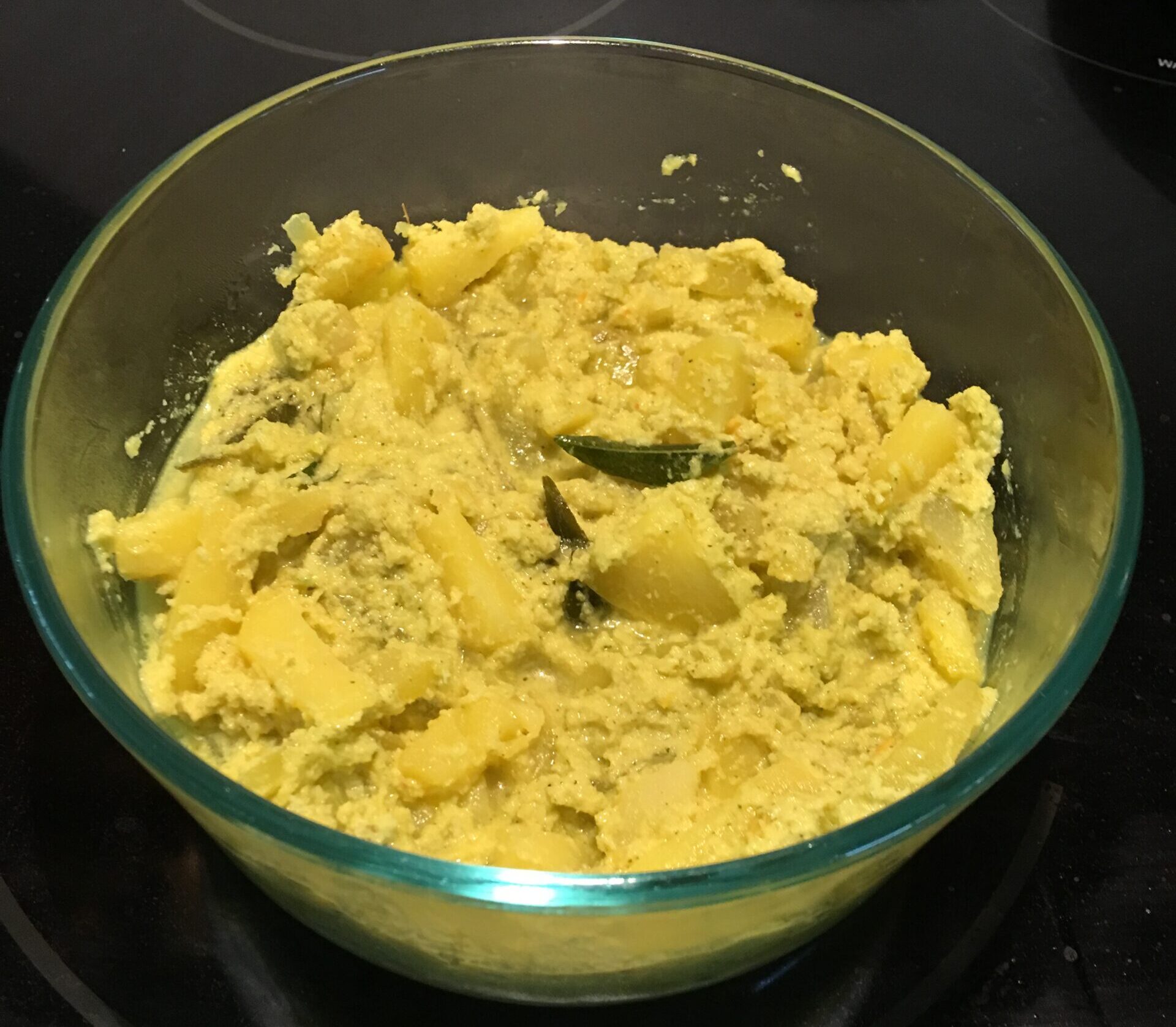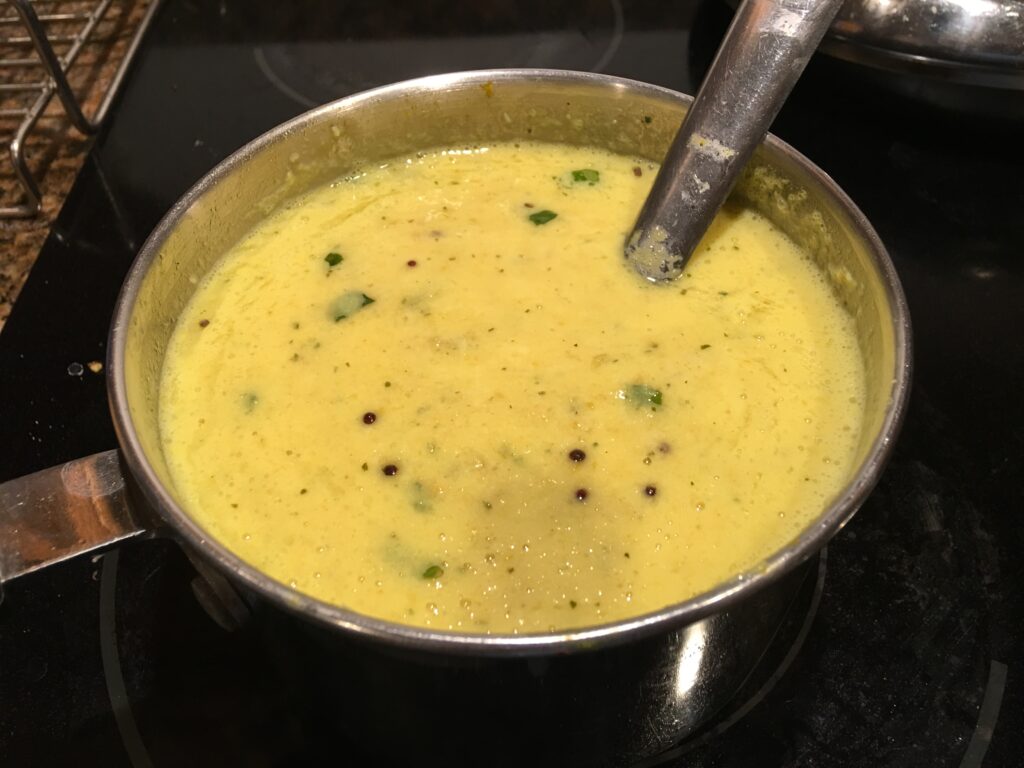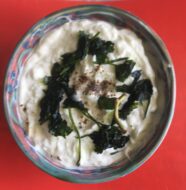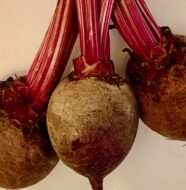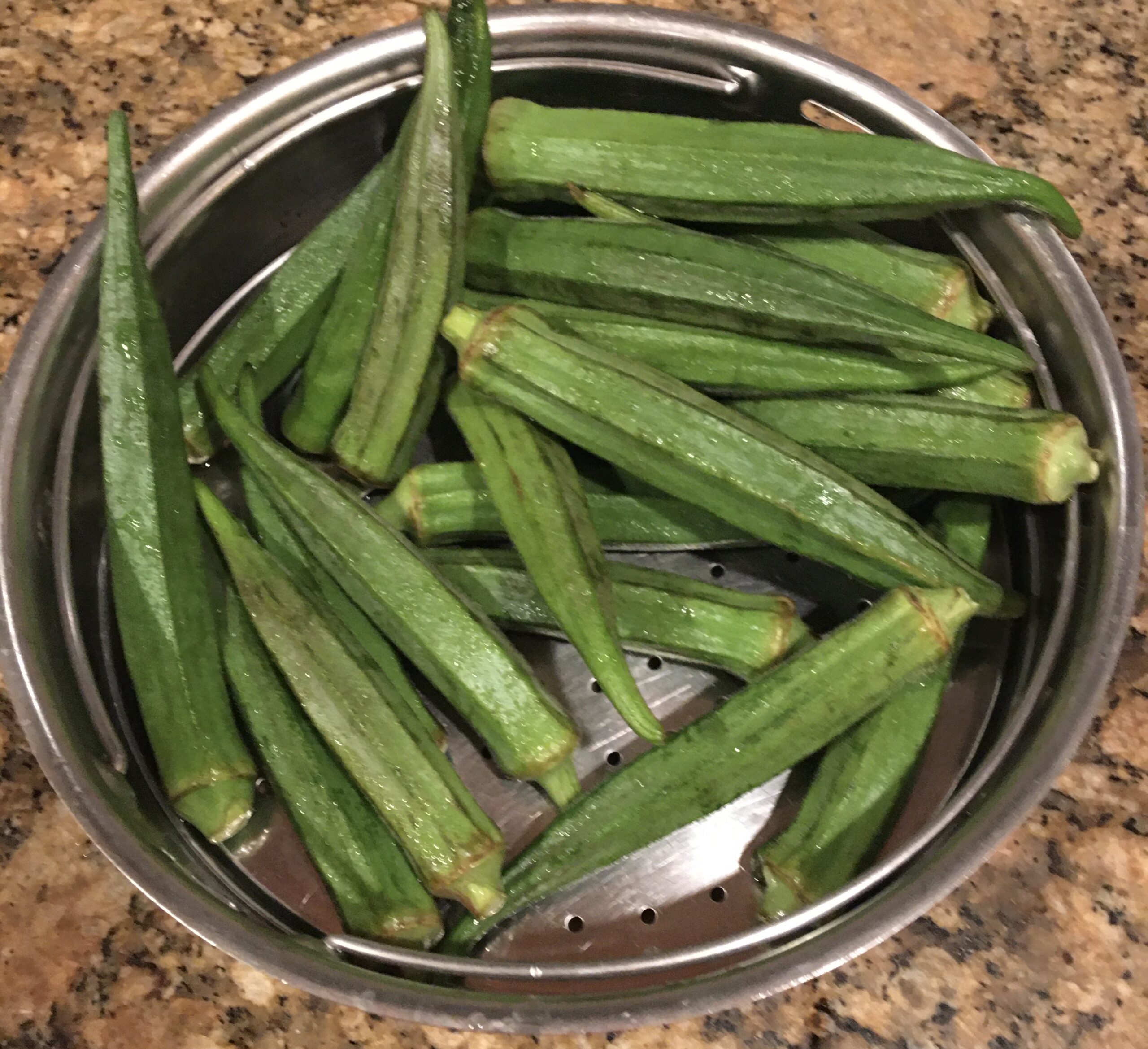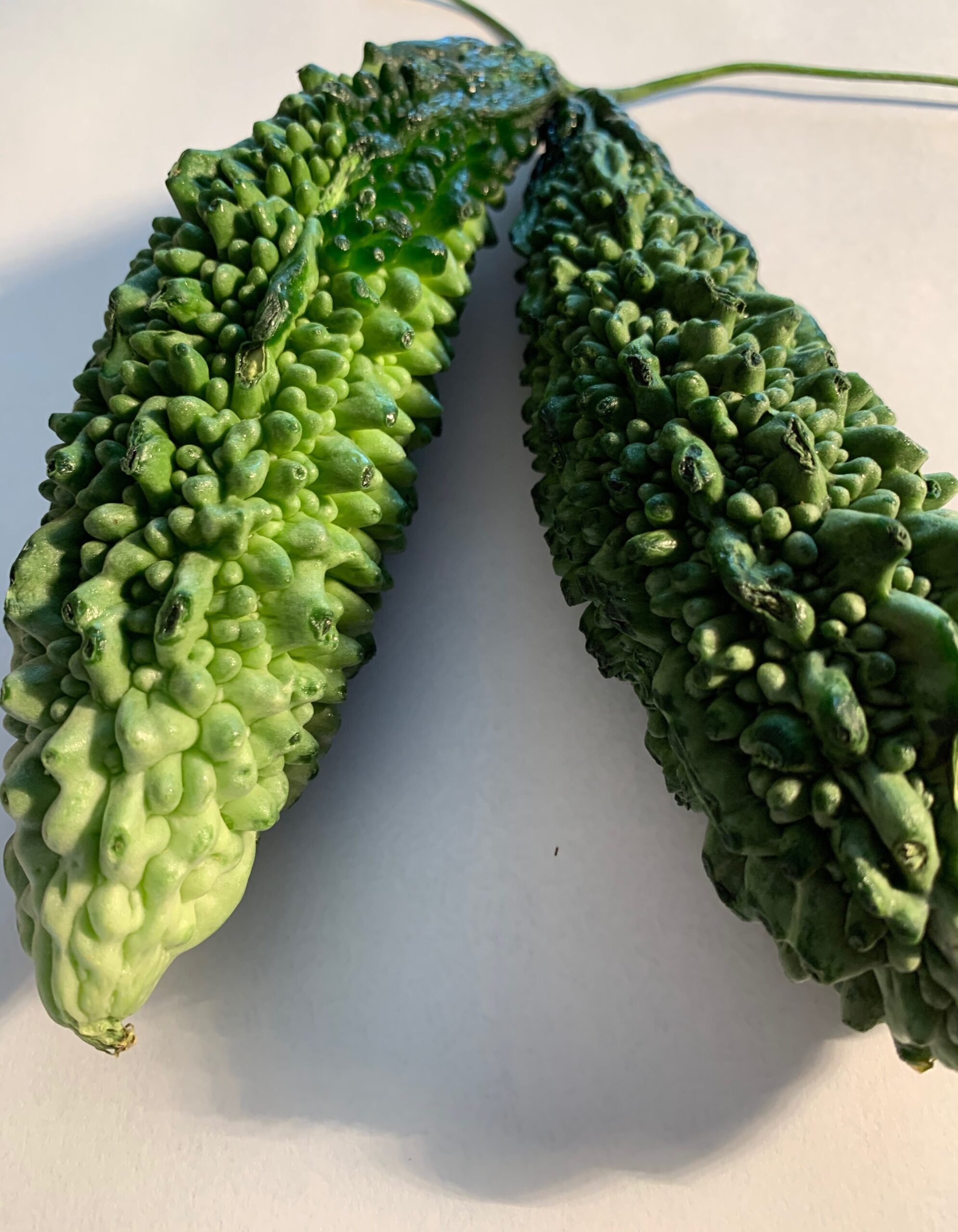Squash are members of the gourd family that vary in size, shape, color, and divided into two categories: summer and winter. The summer squash has a thin edible skin & soft seeds (Zucchini). Winter squashes have hard thick skin & seeds (pumpkin). Their tender flesh has a high water content & cooks quickly. Varieties of squash are Pumpkin, Zucchini, Courgette, Marrow, or Gourd. Acorn, Spaghetti, Buttercup, Autumn, and Winter squash are grown in the U.S.A.
Ash gourd (Winter Melon / Elavon) scientific name “Benincasa Hispida” is native to S.E. Asia. It is an oval-shaped vegetable with a pale green hard waxy skin. It has a white flesh on the outer edge and a soft inner core with seeds embedded in it.
Buying and storage: The ash gourd is 6-8″ long and 3-4″ in diameter. It is available in Indian & Oriental stores. When choosing one, buy cut pieces that are fresh, as the whole squash is too big and hard to cut. Avial, Morkootan, Kootu, Olan, and Petha are some dishes made with ash gourd.
History: Ashgourd’s genetic diversity spans SE Asia – Japan, China, Indonesia, and Malaysia. The squash has been cultivated in China for 2000 years. Winter melon soup is supposed to be a cooling food ideal for eating on hot and sticky days. Chinese literature praises its medicinal value in the 5th & 6th century AD.
http://theindianvegan.blogspot.com/2014/01/all-about-ash-gourd-benincasa-hispida.html
Story: Avial is a mixture of vegetables like Ratatouille, an important side dish of the seven curries served on the banana leaf for a feast. The medley of vegetables is cooked and simmered in yogurt sauce first; then mixed with ground coconut to give a creamy texture. Ash gourd, pumpkin, green banana, green mango, and yam are some vegetables that are traditionally used to make Avial. Currently, chayote squash, zucchini, carrots, green beans, potatoes, and peas are used as substitutes. Coconut oil and curry leaves add their distinct aroma to this gourmet dish from Kerala S. India.
A merchant from Tamilnadu was on a marketing trip to the neighboring state Kerala. During his travel, he tasted a novel dish “Avial”, served at a temple feast. He loved it so much that he requested the cook to prepare the dish to be served at his birthday celebration. When the cook made the Avial, he found the garnishing ingredient “coconut oil” missing. The merchant offered ghee (clarified butter) instead. The cook sent a messenger to his hometown to buy coconut oil and said “ghee is no match to coconut oil to get the true flavor of Avial “.
Ash Gourd Recipes
Ashgourd Avial (yogurt sauce)
Ashgourd Morkootan (buttermilk sauce)
Ashgourd Kootu (with chick pea lentils)
Ashgourd Olan (coconut milk)
Ashgourd Petha ( soaked in sugar syrup)
Nutrition Facts of Ash gourd (Benincasa Hispida) % DV
| GI= 24; GL =0 Water 96% |
Minerals | Vitamins |
| Energy 13 cal. – 1% | Sodium 6 mg -<0.5% | Folates 5 mug – 1.25% |
| Carb. 3g – 2.3% | Potassium 111mg – 2.4 % | Niacin 0.4mg – 2.5% |
| Protein 0.4g – <1% | Calcium 19 mg – 2% | Pantothenic acid 0.133mg – 2.5% |
| Total Fat 0.2g – 1% | Iron 0.4mg – 5% | Pyridoxine 0.035 – 3% |
| Cholesterol 0mg – 0% | Magnesium 10mg – 2.5% | Riboflavin 0.11mg – 1% |
| Dietary Fiber 2.9g – 7.6% | Manganese 0.058mg – 2.5% | Thiamin 0.04mg – 3.3% |
| Phosphorous 19mg – 2.5% | VitaminA 0 IU -0 % | |
| Selenium0.2mug – <1% | Vitamin C 13mg – 14% | |
| ZInc 0.61mg – 6% |
Health Benefits of Ashgourd Avial vegetables
- Ash gourd: 96% of water content. 100g provides 13 cal of a natural energy boost. Helps improve vision – with vitamin B2 Riboflavin 11% RDA which can reduce the chances of eye disorders. The antioxidants found in it help reduce the oxidative stress in the retina and macular degeneration. Increases energy levels vitamin B2 plays an important role in metabolism ensuring that nutrients are converted into usable energy to keep us functioning and use nutrients efficiently.
- Protection against colon cancer: Ashgourd’s green peel is a good source of fiber which helps in smooth bowel movements to offer protection from colon cancer by eliminating toxic compounds from the gut.
- Chayote squash: cholesterol-free and minimal fat; rich in Folate; helps in healthy cell division; prevent neural tube defects in pregnancy.
- Pumpkin: improves eyesight, promotes weight loss, regulates blood pressure; enables restful sleep; improves men’s sexual health; supports better immunity; helps reduce risk of cancer; may help treat diabetes and enhance youthful skin.
- Zucchini: controls diabetes being nonstarchy with high fiber – insoluble fiber delays glucose absorption while soluble fiber improves glucose tolerance.
- Green banana: has high resistant starch content benefiting diabetics; has Probiotic bacteria helping good colon health. It also helps with improved nutrient absorption, especially calcium.
- Yam: a good source of carbohydrates, supports a healthy brain, digestion, and pregnancy; helps with PMS and menopause; gets rid of anemia; enhances the skin and hair; promotes a good immune system, weight loss and fights cancer.
- Carrots: regulate blood cholesterol – regular consumption shows a reduction in cholesterol levels and risk of a heart attack; improve eye health and prevent night blindness in seniors, being rich in vitamin A.
- Green beans: a high amount of chlorophyll; block the carcinogenic effects of heterocyclic amines generated when grilling meat.
- Green mango: prevents dehydration – raw mango with salt prevents excess loss of water from the body and helps to quench thirst. It protects from the negative effects of high temperatures. Drinking unripe mango juice prevents excessive loss of sodium chloride and iron to excessive sweating.
Spice & Herb powers
- Coconut: strengthens the immune system. It has anti-bacterial, anti-fungal, and antiviral properties. Coconut consumption or drinking 2 cups of coconut water helps build immunity.
- Turmeric powder: anti-inflammatory – turmeric can reduce inflammation in the guts for people with inflammatory bowel disease as per a study in the British Journal of Nutrition.
- curry leaves: good for eyesight due to rich vitamin A content; prevent the early onset of cataract. They can also heal wounds, burns, and skin eruptions.
Method to cook Ash gourd Avial
- Peel and cut vegetables into long thin strips; rinse & drain. (10 min.)
Cook in Stove (12-15 min.)
- Cook the vegetables in stages on the stove in a wide saucepan with green banana/ potato/ yam first for 5 min. and then add the ash gourd, chayote squash, pumpkin, or zucchini for 10 min.
Cook in ONE Pot (10 min.)
- Place cut vegetables in the pot; add salt and turmeric powder +1/2 cup water.
Cook in Microwave (8 min.)
- Place vegetables in a microwave-safe container; add salt & turmeric powder. cover with a plastic wrap.
- Meanwhile, grind coconut with green chili and 1/2 cup water. (2 min.)
- Transfer cooked vegetables to the saucepan; add yogurt and coconut.
- Simmer on low heat until yogurt sauce turns frothy. (3 min.)
- Mix well with Sour cream/ Greek yogurt for a creamy texture. (optional)
- Garnish with sprigs of curry leaves dipped in coconut oil. (2 min.)
Serve Avial with Quinoa, Coconut Rice, Rice noodles, Naan or Pasta.
TIPS
To ensure a homogeneous mixture, don’t overheat the yogurt sauce and to prevent curdling
For Gourmet Avial cook each vegetable separately for uniform cooking
Avial can be stored for a week in the refrigerator; tastes better served cold
Omit yogurt and add 1 tbsp. tamarind paste for vegans

